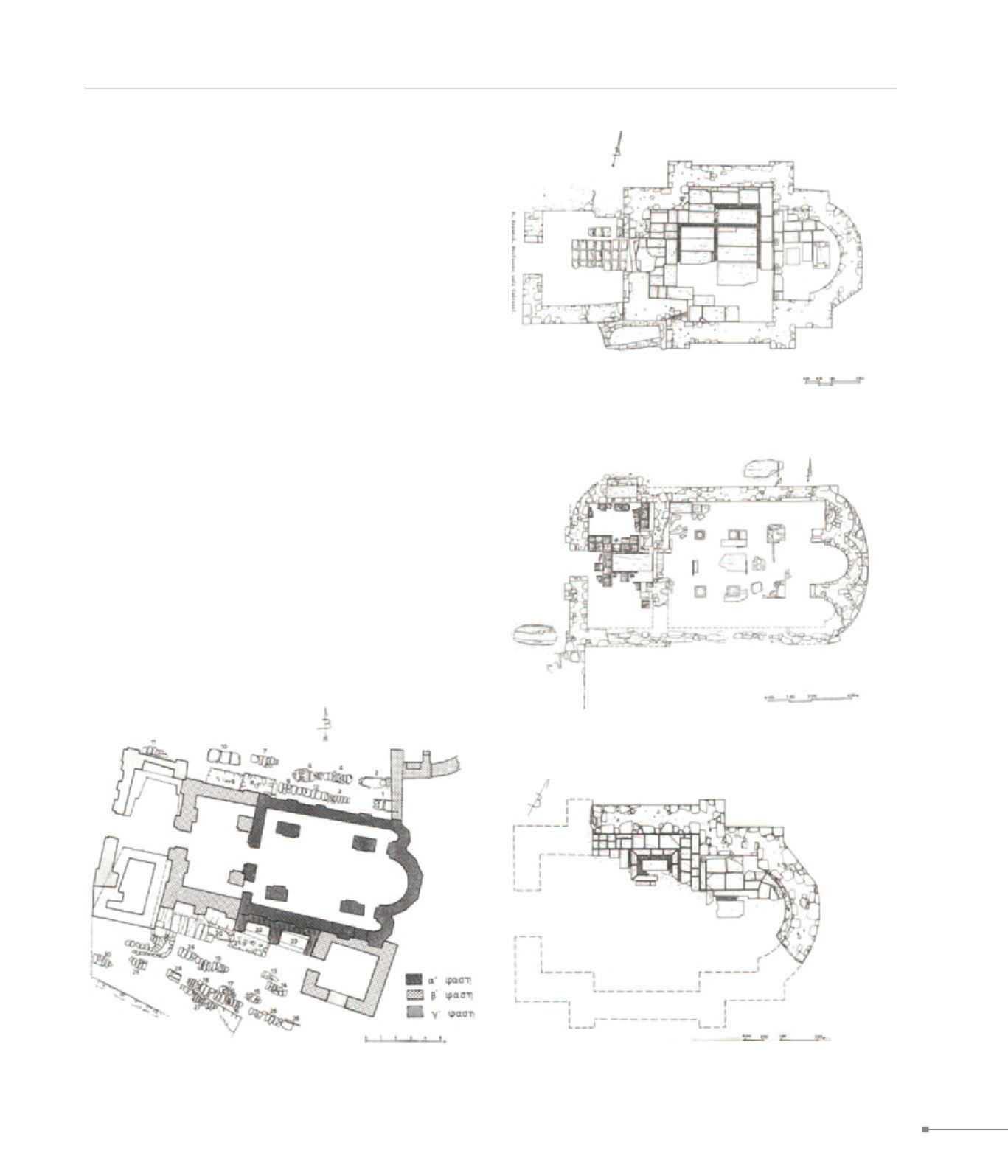
Mount Papikion.
Mount Papikion.
THRACE
89
19. Mount Papikion, Kerasia, church A, ground plan (Παπίκιον όρος,
Κερασιά, ναός Α’, κάτοψη)
19. Mount Papikion, Sostis complex, catholicon, ground plan (Παπίκιον
όρος, συγκρότημα Σώστη, καθολικό, κάτοψη)
19. Mount Papikion, area of Sostis, church Γ, ground plan (Παπίκιον
όρος, περιοχή Σώστη, ναός Γ’, κάτοψη)
19. Mount Papikion, Lenos comlex, catholicon, ground plan (Παπίκιον
όρος, συγκρότημα Ληνού, το καθολικό, κάτοψη)
19.
Mount Papikion.
A significant monastic centre of the Byzantine period, Mount
Papikion extends to the south slope of Rhodope, almost between
the river Kompsatos and Komotini. Famous personalities from
political, military and ecclesiastic circles in the Byzantine empire
are known to have withdrawn here to lead a monastic life. Mount
Papikion flourished in the 11th and 12thc., declined from the 13th
c., and was abandoned from the late 14th c. A plethora of monas-
teries, a cistern, a watermill and a bath have been located.
Excavations have revealed the following monuments. Monastic
complex of Sostis: Catholicon, (three-aisled basilica with narthex
bearing sculpted decoration), refectory, portico, cells and other
edifices. It operated from the 11th to the 14th c. Area of Sostis:
Church Γ is a free cross plan church (11th or 12th c.), with marble
inlay on the floor. Kerasia: Church Α is a domed, free cross plan
church, with marble inlay on the floor and architectural sculp-
tures of the 11th or 12th c.; Church Β is a domed, free cross
plan church dating from the late 11th-early 12th c., with a narthex
of the same period in a second phase. Other features include:
tomb with arcosolium; fragments of wall-paintings (12th c.); high-
quality sculptures (11th or 12th c.). Monastic complex of Lenos:
Catholicon (cross-in-square church with narthex added at a later
stage, and exonarthex. Other features include: marble inlay on
the floor; fragments of high-quality wall-paintings (12th c.); cist
graves around the catholicon; refectory, two cisterns, kitchens,
oven, and other structures. This complex operated from the mid-
11th to the mid-14th c. Maria, wife of Nikephoros Botaneiates (r.
1078-1081) was buried here. Her golden ring has been found,
as well as a wall-painting depicting her and Constantine (died
1095), her son by Michael VII Doukas (r. 1071-1078).


